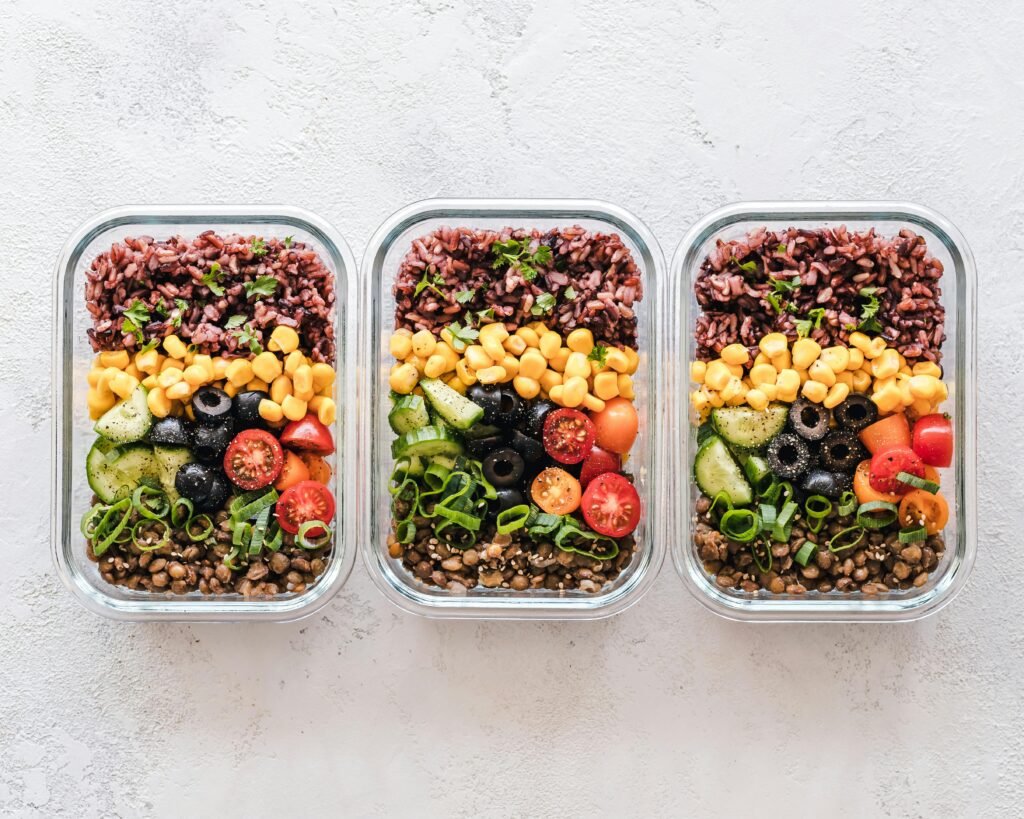Let’s be honest here—maintaining a calorie deficit sounds about as fun as watching paint dry while doing your taxes. You’ve probably tried it before, right? Started strong on Monday, felt like you were starving by Wednesday, and by Friday you were face-deep in a pizza wondering where it all went wrong.
But here’s the thing: maintaining a calorie deficit doesn’t have to feel like medieval torture. I’ve been there, done that, bought the oversized t-shirt (literally), and I’m here to tell you there’s a smarter way to do this whole weight loss thing.
The secret isn’t willpower—it’s strategy. And today, we’re going to crack the code on how to maintain a calorie deficit without feeling like you’re constantly battling your own stomach.
What Exactly Is a Calorie Deficit (And Why Should You Care)?
Before we dive into the good stuff, let’s get crystal clear on what we’re dealing with here. A calorie deficit simply means you’re burning more calories than you’re eating. Think of it like your bank account—if you spend more than you earn, your balance goes down. Same principle, different currency.
Your body needs a certain number of calories just to keep the lights on—breathing, pumping blood, keeping your brain running (yes, thinking actually burns calories). When you eat fewer calories than your body needs, it starts dipping into your fat stores for energy. That’s when the magic happens.
Here’s the golden rule: A deficit of 3,500 calories roughly equals one pound of fat loss. So if you create a daily deficit of 500 calories, you’re looking at about one pound lost per week. Math can be beautiful sometimes.
The Million-Dollar Question: How Many Calories Should You Actually Cut?
This is where most people go completely off the rails. They figure if 500 calories is good, then 1,000 must be better, right? Wrong. So very wrong.
The sweet spot for a sustainable calorie deficit is typically 300-500 calories below your maintenance level. Going more aggressive than that is like trying to sprint a marathon—you might start fast, but you’re not going to finish strong.
Here’s a quick reality check: if you’re a moderately active woman, your maintenance calories might be around 2,000. That means your calorie deficit diet would target about 1,500-1,700 calories daily. For men, those numbers typically run higher.

The Art of Staying Full Without Breaking the Calorie Bank
Now we get to the good stuff—the strategies that separate the pros from the amateurs. The key in how to maintain a calorie deficit without feeling hungry lies in food choices, not just food amounts.
Volume Eating: Your New Best Friend
This is where things get interesting. Did you know you can eat a massive bowl of vegetables for the same calories as a tiny handful of nuts? It’s all about calorie density—choosing foods that give you more bang (or should I say bulk) for your caloric buck.
High-volume, low-calorie superstars include:
- Leafy greens (spinach, kale, arugula)
- Cruciferous vegetables (broccoli, cauliflower, Brussels sprouts)
- Berries and other water-rich fruits
- Lean proteins like chicken breast and white fish
- Soups and broths (they’re incredibly filling)
The Protein Power Play
Here’s something that might surprise you: protein is your secret weapon for staying full. It’s the most satiating macronutrient, meaning it keeps you satisfied longer than carbs or fats. Plus, it has the highest thermic effect—your body actually burns calories just digesting it.
I always tell people to aim for about 25-30% of their calories from protein when maintaining a calorie deficit. That might sound like a lot, but it makes the whole process so much easier.
Smart Snacking: Your Hunger-Fighting Arsenal
Let’s talk about healthy snacks for calorie deficit. The key is choosing snacks that work with you, not against you.
My go-to hunger-crushing snacks:
- Greek yogurt with berries (protein + fiber combo)
- Apple slices with a small amount of almond butter
- Hard-boiled eggs (portable protein powerhouses)
- Vegetable sticks with hummus
- A small handful of nuts (emphasis on small)

The Exercise Equation: Combining Movement with Your Calorie Deficit
Here’s where people often get confused. Should you create your deficit through diet, exercise, or both? The answer is both, but with strategy.
The ideal approach combines:
- A moderate dietary deficit (300-400 calories)
- Regular exercise that burns an additional 100-200 calories
This approach is more sustainable because you’re not relying entirely on restricting food. Plus, exercise brings a whole host of other benefits—improved mood, better sleep, increased muscle mass (which burns more calories at rest).
But here’s a pro tip: don’t go crazy with the cardio. Excessive cardio can actually increase hunger hormones, making it harder to stick to your calorie goals. A mix of moderate cardio and strength training is your best bet.
Avoiding the Muscle Loss Trap
One of the biggest mistakes people make when maintaining a calorie deficit is losing muscle along with fat. This is like throwing the baby out with the bathwater—muscle is metabolically active tissue that helps you burn more calories even at rest.
To avoid losing muscle while maintaining a calorie deficit:
- Keep protein intake high (0.8-1g per pound of body weight)
- Include resistance training 2-3 times per week
- Don’t make your deficit too aggressive
- Consider timing your workouts around your meals
Red Flags: When Your Calorie Deficit Has Gone Too Far
Your body is pretty smart, and it’ll let you know when things aren’t right. Signs that your calorie deficit is too extreme include:
- Constant fatigue and brain fog
- Irritability and mood swings
- Hair loss or brittle nails
- Disrupted sleep patterns
- Loss of menstrual cycle (for women)
- Constant obsession with food
If you’re experiencing any of these, it’s time to pull back and reassess your approach.
Mastering the Mental Game: Handling Cravings and Hunger
Let’s be real—you’re going to get hungry sometimes. That’s normal. But there’s a difference between true physiological hunger and habitual or emotional eating.
Strategies for handling hunger and cravings:
- Drink water first—Sometimes thirst masquerades as hunger
- Wait 20 minutes—Often cravings pass if you just give them time
- Distract yourself—Go for a walk, call a friend, or engage in a hobby
- Plan for it—If you know you get hungry at 3 PM, have a healthy snack ready
The Truth About Calorie Tracking
Can you achieve a calorie deficit without counting calories? Technically, yes. But it’s like trying to navigate without a map—possible, but much harder.
The most accurate approach involves:
- Using a reliable app like MyFitnessPal for tracking
- Weighing foods when possible (especially calorie-dense items)
- Learning portion sizes through visual cues
- Being honest about everything that goes in your mouth
Strategic Diet Breaks: Why Taking a Break Can Help
Here’s something counterintuitive: taking planned breaks from your calorie deficit can actually help with long-term success. These “diet breaks” typically involve eating at maintenance calories for 1-2 weeks every 6-8 weeks.
This approach helps:
- Reset hunger hormones
- Restore metabolic function
- Provide psychological relief
- Prevent adaptive thermogenesis (metabolic slowdown)
Eating Out and Special Occasions: Staying on Track
Life doesn’t stop because you’re maintaining a calorie deficit. You’ll have dinner dates, work events, and vacations. The key is planning and flexibility, not perfection.
Restaurant survival strategies:
- Check menus online beforehand
- Ask for dressings and sauces on the side
- Focus on lean proteins and vegetables
- Consider eating a small snack before going out
- Don’t be afraid to ask for modifications
The Sleep Connection: Why Rest Matters for Your Calorie Deficit
Here’s something most people don’t realize: poor sleep can sabotage your calorie deficit efforts. When you’re sleep-deprived, your body produces more ghrelin (the hunger hormone) and less leptin (the satiety hormone).
Aim for 7-9 hours of quality sleep per night. Your waistline—and your sanity—will thank you.
When the Scale Stops Moving: Breaking Through Plateaus
You’ve been doing everything right, but the scale hasn’t budged in weeks. Welcome to the plateau—every dieter’s nemesis. Weight stalls are normal and expected, especially as you get closer to your goal weight.
Plateau-busting strategies:
- Reassess your calorie intake (portion sizes can creep up over time)
- Change up your exercise routine
- Take progress photos and measurements (sometimes the scale lies)
- Consider a diet break
- Be patient—sometimes weight loss happens in whooshes, not steady declines
Tools and Products That Actually Help
While you don’t need fancy gadgets to maintain a calorie deficit, some tools can make the journey easier:
| Tool | Why It Helps | Best For |
|---|---|---|
| Food Scale | Accurate portion control | Calorie-dense foods like nuts, oils |
| Fitness Tracker | Monitors activity and calories burned | Understanding your energy expenditure |
| Meal Prep Containers | Portion control and planning | Busy schedules |
| Protein Powder | Easy way to increase protein intake | Post-workout nutrition |
| Fiber Supplements | Increased satiety | Those struggling with hunger |

Your Action Plan: Making It All Work in Real Life
Knowledge without action is just entertainment. Here’s your step-by-step approach to maintaining a sustainable calorie deficit:
Week 1-2: Foundation Building
- Calculate your maintenance calories using an online calculator
- Set a moderate deficit goal (300-500 calories)
- Start tracking your food intake
- Plan your meals around protein and vegetables
Week 3-4: Optimization
- Assess what’s working and what isn’t
- Adjust portion sizes if needed
- Add in regular exercise if you haven’t already
- Identify your hunger patterns and plan accordingly
Week 5+: Long-term Success
- Focus on consistency over perfection
- Plan for social events and challenges
- Consider diet breaks when appropriate
- Celebrate non-scale victories
The Bottom Line: Sustainable Success
Maintaining a calorie deficit doesn’t have to be miserable. It’s not about depriving yourself or living on lettuce leaves and regret. It’s about making smart choices that work with your lifestyle, not against it.
The most successful people I know treat weight loss like a skill to be learned, not a punishment to endure. They experiment, they adapt, and they find what works for their unique situation.
Remember, the best calorie deficit is the one you can maintain consistently over time. Start with small changes, be patient with the process, and trust that consistency will get you where you want to go.
Your body didn’t change overnight, and it won’t change back overnight either. But with the right approach, maintaining a calorie deficit can become second nature—a sustainable way of eating that supports your goals without sacrificing your sanity.
Ready to start your sustainable weight loss journey? Download a calorie tracking app today and begin implementing these strategies one at a time. Remember, progress over perfection always wins the long game.





